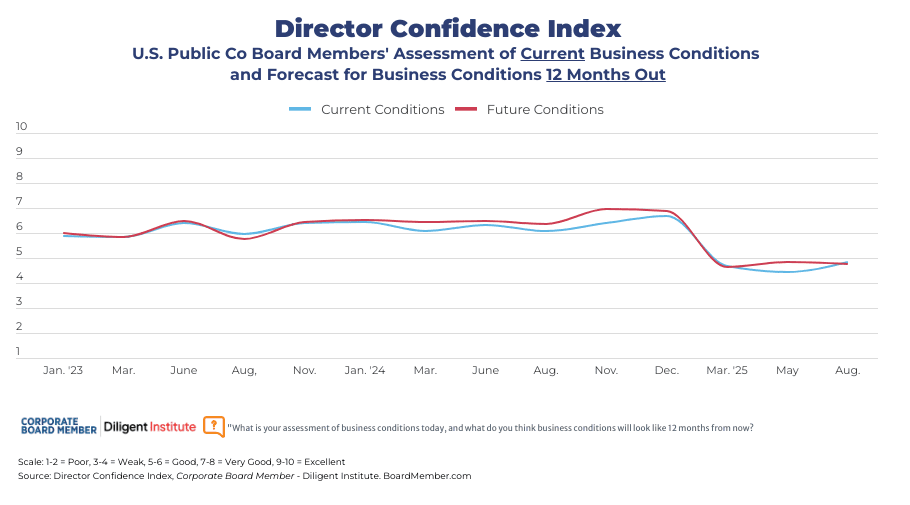 Gender diversity among directors of corporate boards in the U.S., while increasingly considered a “best practice,” might soon become a requirement. In some places, it already has. Take Germany, for example, where since 2016, 30 percent of supervisory positions within the country’s businesses were required to be held by women. The U.S., in comparison, has historically sought to increase female representation in boardrooms organically. The results, while positive, have been slow. According to 2020 Women on Boards, women currently hold 17.7% of board seats on the Russell 3000, up just 1.7 percent from a year prior.
Gender diversity among directors of corporate boards in the U.S., while increasingly considered a “best practice,” might soon become a requirement. In some places, it already has. Take Germany, for example, where since 2016, 30 percent of supervisory positions within the country’s businesses were required to be held by women. The U.S., in comparison, has historically sought to increase female representation in boardrooms organically. The results, while positive, have been slow. According to 2020 Women on Boards, women currently hold 17.7% of board seats on the Russell 3000, up just 1.7 percent from a year prior.
Approved on September 30, 2018, California’s Senate Bill 826 will aim to put boardroom diversity on the fast track. It demands exchange-listed companies headquartered in the state to increase inclusion of women on their boards, addressing their drastic under representation at the top echelon of U.S. businesses.
Bill 826 takes a phased approach to mandated inclusion of women on boards. Publicly traded companies based in California will be expected to have a minimum of one woman on their boards of directors before the end of 2019. By July 2021, five-member boards will need at least two women, and those with six or more directors will need at least three. Failure to comply would mean facing a fine upwards of $100,000. While California’s historic stride towards gender parity in boardrooms is commendable, the law only impacts one of 50 states. The U.S. has a long way to go before it can boast healthy gender representation within the boardroom on a nationwide scale.
California-based organizations are not the only ones facing pressure to develop more diverse boards, however. Recently, the world’s largest proxy advisory firm, Institutional Shareholder Services (ISS), proposed an update to its board gender diversity policy. The policy update, slated to commence in 2020, holds that ISS may recommend voting against a nominating committee chair in companies without female directors. The policy would not simply apply to large-cap organizations but would apply to both Russell 3000 and S&P 1500 companies, and ISS estimates that about 10 percent of Russell 3000 companies would be affected.
On the investing side, BlackRock, the world’s largest asset management firm, announced that it would stop investing in businesses that fail to address gender diversity among their boards. BlackRock expects the companies it invests in to retain at least two female board members – a recommendation it privately advised to approximately 300 companies in the Russell 1000. Additionally, in a 2018 letter to CEOs, Larry Fink indicated that BlackRock would continue to emphasize the importance of a diverse board. As one of the largest shareholders of American companies, it is highly unlikely that BlackRock’s request goes ignored.
U.S. companies are facing increasingly drastic consequences for not diversifying their boards. However, this initiative is not one that should be embraced simply for the sake of avoiding such consequences. In fact, it has been widely proven that gender diversity among management positions has a notably positive effect on company performance. According to a report from McKinsey & Company, research showed that companies in the top 25th percentile for gender diversity in management positions were 21 percent more likely to experience above-average profits. In addition, a research report from Credit Suisse confirmed that organizations with more female executives in leadership positions saw higher overall returns. Other reported benefits to boardroom gender-heterogeneity include more effective risk mitigation and crisis management, enhanced dialogue surrounding critical issues, and lower levels of in-group favoritism.
Fortunately, it appears as though boards are finally beginning to take action. In a board monitor report from Heidrick & Struggles, an international recruiting firm, it was found that women filled 38.3 percent of all newly appointed board seats among Fortune 500 companies in 2017 – the largest percentage recorded since the data was first tracked in 2009. At this rate, the company projects that women could reach parity with men on boards by as early as 2025. For this to happen though, organizations will need to continue to encourage board refreshment while keeping gender diversity top of mind. This requires conducting regular skillset and diversity reviews, as well as imposing tenure limits. Another avenue being used by some organizations is board expansion, creating additional seats for new members. Others are considering more robust mentoring and advocacy programs as part of their overall board and executive succession planning.
While strides made towards gender parity amongst board directors are notable, board diversity must extend beyond consideration of gender. Ensuring an array of diverse viewpoints enables board directors to solve problems more efficiently and encourages both creativity and innovation. It allows boards to avoid the pitfalls of ‘groupthink’ – a psychological phenomenon that occurs when the desire for group consensus supersedes individuals’ desire to present alternatives, offer critique, or express an unpopular opinion. It is vital that organizations integrate diversity in gender and ethnicity with diversity in thought and experience in order to create and maintain an environment that encourages directors to practice innovative thinking and share dissenting viewpoints. Perhaps most importantly, however, diversity at the board level is the first step to driving a culture of inclusivity throughout an organization.
Read more: Updated ISS Policies Show Gender Diversity Remains A Front-Burner Issue




